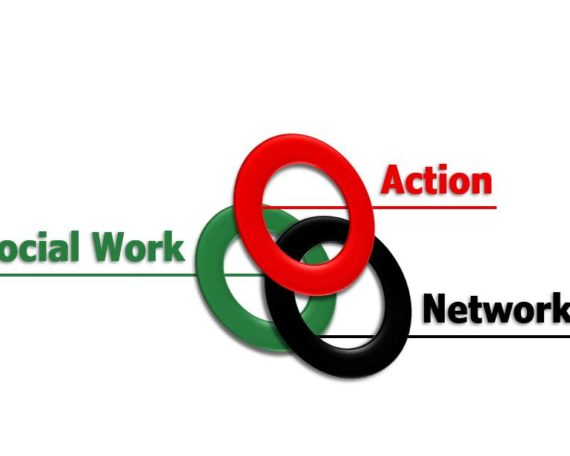The Background
With the election of the coalition government in 2008, the recent economic crises and radical welfare reforms which have been proposed in recent years, social work and social policy in England have been undergoing profound changes. Following the tragic death of Baby Peter Connelly and enquiries into the systemic failure of professionals within Haringey Council, the Social Work Task Force, and consequently the Social Work Reform Board were created to propose progressive changes to social work education, training and practice.
 Within this backdrop, the status of child protection emerged as an area of increasing public policy concern. Following Lord Laming’s report on child protection in 2009, the challenges faced by front-line social work practitioners in managing huge caseloads, while manoeuvring lengthy bureaucratic procedures highlighted the difficulties in maintaining professional judgement, while engaging in ‘tick box’ assessment systems. In June 2009, Professor Eileen Munro, from the London School of Economics, was invited by the Secretary of State to conduct an independent review of child protection in the UK. We briefly summarize the findings of the three reports published under the Munro review and provide a critical commentary about its relevance, impact and implications for social work practitioners.
Within this backdrop, the status of child protection emerged as an area of increasing public policy concern. Following Lord Laming’s report on child protection in 2009, the challenges faced by front-line social work practitioners in managing huge caseloads, while manoeuvring lengthy bureaucratic procedures highlighted the difficulties in maintaining professional judgement, while engaging in ‘tick box’ assessment systems. In June 2009, Professor Eileen Munro, from the London School of Economics, was invited by the Secretary of State to conduct an independent review of child protection in the UK. We briefly summarize the findings of the three reports published under the Munro review and provide a critical commentary about its relevance, impact and implications for social work practitioners.
The First Report
The Munro review of child protection was published in three parts between autumn and spring 2010 -11. Part One: A Systems Analysis was published on 10 October 2010, receiving considerable media attention. In this report, Munro engaged in a consultative process of speaking to service users, children, young people, families and social workers in an attempt to understand “why previous well-intentioned reforms, have not resulted in the expected level of improvements” (Munro, 2010:3). Thus, this could be viewed as base-line report, engaging in policy analysis of recent reforms to child protection, with some discussion of implications for social work practitioners. The report is structured in three parts: section one detailing a systems approach to child protection, section two focuses on early prevention and intervention and section three sets out the next steps for the second report.
In the first report, Munro criticises the atomistic nature of current child protection systems which focus on isolated problems, technocratic regulations driven by compliance culture. While she attempts to broaden this scope by adopting a ‘holistic approach to child protection’, this is limited in scope and intent. Some useful points emerge including the need to strengthen professionalism and adopting a socio-technical approach. However, this ‘systems approach’ is still limited to thinking within bureaucratic structures, rather than engaging in broader conceptualizations of the problems of child protection as a social issue (see Parton, 2010). Thus, while the first report had some positive aspects, especially in listening to the voices of service users themselves, the problematics of bureaucratic and managerial social work practice remain unchallenged, and the real challenges facing children and families social work, especially the resource limitations faced by local authorities, remain invisible.
The Second Report
The second report, Part Two: A Child’s Journey was published on 10 February 2011. This report structured in four chapters is a descriptive account of child protection systems as experienced by a young person from seeking help to receiving it, from initial needs assessment to final evaluation of interventions. While Munro insists that the report “will not seek a series of superficial quick fixes” (Munro, 2011a:8), the interim report in many ways does suffer from a superficial treatment of a complex issue. In the second report, Munro expands on her systems approach and details the need for good practice including early intervention and prevention, the role of multi-agency working and effective ‘management’ of front-line social workers in safeguarding children. This report is weakened by its narrow focus on vulnerable children only when they enter the system, rather than a much needed broader discussion of the lack of supports and combined systemic failures within schools, families and communities which can lead to a child becoming at risk. By doing so, the focus of this report is not so much on child-centredness as the goal of a ‘good society’, but rather on facilitating and creating a smooth transition for children engaging within the system. Wider discussions around the lack of power, governmentality and trust in the social work profession (see Houston, 2011; Pollack, 2011 for discussion) are not considered. Instead, it is a revival of the street-level bureaucracy dialogues, placing the burden of efficient service delivery once again on front-line social workers, without reducing any of the crushing difficulties of coping with high risk cases with finite staff, time, support and resources.
The Final Report
The final report A Child Centred System was published on 10 May 2011 and is organised in eight chapters. With much signposting to the previous two reports, the final review presents a guide for an effective child protection system, embedded within professional values and shared accountability and transparency in practice. By attacking the compliance culture, and promoting learning cultures within organizations, the report presents as a departure from previous policy reforms which laid the blame of child death as a failure of professional judgement, rather than looking deeply into its causes.
The recommendations put forth mirror much of Lord Laming’s (2009) report, including the removal of over-bureaucratized lengthy assessment procedures. In addition, suggestions are made to overhaul the assessment process by removing distinctions between initial and core assessments, creating greater leeway for professional judgement, removing constraints to local innovation and creating new and more effective inspection procedures for good practice to support children in their journey through the child protection system. Thus, by sharing accountability for child protection across agencies, the child centred system proposed by Munro, attempts to create a more efficient, less bureaucratized system of procedures.
Key weaknesses of the Inquiry
A critical observation of all three reports, especially the final Munro review reveals four major weaknesses. While this was an independent review, the lack of explicit political and ideological positioning within these reports is itself quite worrying. Academics with practitioner experience, or who are closely aligned with practice, are generally clearly rooted within specific (and often left-wing) ideologies, with a clear focus on protecting vulnerable groups and families. The selection of Eileen Munro to head this review, adds legitimacy and institutional power to her reports, but simultaneously makes one wonder why a academic-practitioner was not charged with this important task.
While Munro does propose a useful critique of past reforms in child protection, her analysis of their failures as being ‘unanticipated’ is almost naïve. It was recognition of the problematic nature of these reforms that was the stated starting point of the Social Work Task Force. Broader neo-liberal contexts, the marketization of welfare and the new managerialist models, have all but made it impossible for front-line workers to be more than administrative clerks and they have lost power, voice and agency in the work they do. Thus, the marketized system of welfare would favour ‘efficiency’ over quality of service user encounter, reducing the young person in need to being a ‘case’ which needs immediate resolution, rather than as a child with specific needs. Munro confuses child-centredness, with child engagement with the child protection system. Remaining child-centred requires at the very least an acceptance that any examination of the child’s needs must involve a deeper examination of the family and community as well. Finally, what we have is a manager’s guide to good practice, rather than a critical reflection on the social basis of child protection, as a concern for everyone living in a ‘good society’. Social work practitioners can gain a useful summary of child protection systems and procedures in these reports, but from a practitioner’s perspective, these reports provide little new knowledge and direction in extending current debates.
References
Houston, S. (2010). Further reflections on Habermas’s contribution to discourse on child protection: An examination of power in social life. BJSW. 40:1736-1753.
Munro, E. (2010). The Munro review on child protection: Part 1 A Systems Analysis. London: Department of Education.
Munro, E. (2011a). The Munro review of child protection: Interim report- A child’s journey. London: Department of Education.
Munro, E (2011b). The Munro review of child protection: Final report- A child centred system. London: Department of Education.
Parton, N. (2010). Child protection and safeguarding in England: Changing and competing conceptions of risk and their implications for social work, British Journal of Social Work, 1-22.
Pollack, S. (2010). Labelling clients ‘risky’: Social work and the neo-liberal welfare state. BJSW. 40:1263-1278.
Social Work Task Force. (2009). Building A Safe, Confident Future: The final report of the social work task force. London: Department for Children Schools and Families.

